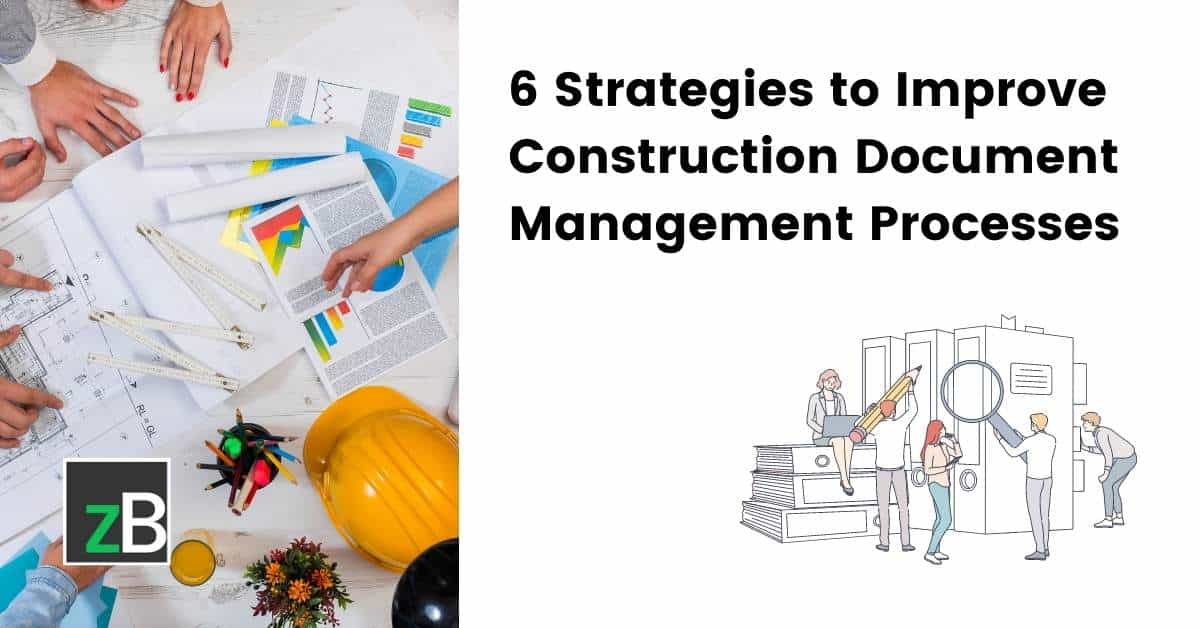Understanding Company: Enhance Performance with Construction Document Management
Wiki Article
Optimizing Task Collaboration: Architect's Best Practices in Building Document Management
In the detailed realm of building projects, the effective administration of building and construction files stands as a keystone for success. Designers, with their careful focus to detail and innovative design services, are tasked with coordinating a symphony of resources, stakeholders, and timelines. Nonetheless, among this complexity lies a sixty-four-thousand-dollar question: just how can engineers enhance partnership processes to boost task results? By checking out vital approaches such as leveraging cloud-based platforms, establishing robust communication protocols, and ensuring information safety and security, engineers can boost their file administration practices to brand-new elevations.Leveraging Cloud-Based Platforms
Leveraging cloud-based systems is an essential strategy for modern-day architects in enhancing building and construction paper administration processes. By transitioning from typical paper-based systems to shadow remedies, designers can streamline cooperation, enhance file availability, and boost overall project performance. Cloud-based systems supply engineers the capability to store, share, and upgrade construction documents in real-time, guaranteeing that all employee have accessibility to the most existing info regardless of their area. This access promotes smooth interaction and sychronisation among task stakeholders, bring about less mistakes and delays in the construction procedure.In addition, cloud-based systems provide a protected environment for storing delicate job information, supplying security, routine backups, and individual approval setups to shield data integrity. Engineers can also take advantage of the scalability of cloud options, permitting them to change storage capacity and capability based upon task requirements. On the whole, leveraging cloud-based platforms encourages architects to maximize their building paper monitoring processes, driving higher collaboration, performance, and success in their jobs.
Implementing Variation Control Equipment
Having established the benefits of cloud-based platforms in construction document monitoring, engineers can currently improve their record control processes by executing Variation Control Systems. Version Control Solution (VCS) are necessary devices that track modifications in files, making certain that employee are constantly collaborating with the most recent and most accurate info. By implementing VCS, designers can maintain a centralized database where all project records are stored, enabling seamless collaboration while reducing the threat of mistakes and variation problems.This function is specifically valuable in building and construction projects where style iterations and alterations are common. This openness not just improves accountability but likewise helps in solving conflicts or discrepancies that may develop during the job lifecycle.
Establishing Interaction Methods
To make certain reliable and reliable task coordination, designers have to establish clear and durable communication procedures within their building and construction document management processes. This system can be a project monitoring software, e-mail threads, or cloud-based storage options.Furthermore, interaction procedures must also consist of standards on just how to deal with disputes, change orders, and immediate problems that may occur throughout the job lifecycle. Establishing an organized approach to communication ensures that all stakeholders are on the very same page, advertises transparency, and inevitably adds to the successful conclusion of the building and construction job.
Using BIM Software Application for Sychronisation
BIM software plays a critical duty in boosting control among project employee in the building and construction sector. Structure Information Modeling (BIM) assists in collaboration by providing a central platform where engineers, designers, contractors, and various other stakeholders can function together in a worked with fashion. With BIM software, project participants can access and update a shared version that has thorough details about the building style, building and construction elements, and task timetables.explanation

Moreover, BIM software makes it possible for real-time cooperation and interaction amongst team members, despite their physical area. With cloud-based BIM systems, project stakeholders can access the most current task details, track modifications, and make notified choices immediately. On the whole, leveraging BIM software application for sychronisation enhances job effectiveness, efficiency, and ultimately causes effective project end results.
Ensuring Data Safety and Compliance
In the realm of building and construction paper administration, safeguarding data honesty and ensuring governing compliance are critical considerations for designers and various other project stakeholders. Architects must execute robust security steps to shield sensitive task info from unauthorized access or violations.
Final Thought
To conclude, engineers can maximize project cooperation in building file management by leveraging cloud-based platforms, implementing version control systems, developing communication protocols, using BIM software application for sychronisation, and guaranteeing information protection and conformity. These finest practices assist enhance the building process, enhance interaction among project stakeholders, and improve performance in job distribution. By following these standards, architects can effectively handle building and construction records and assist in successful task end results.With BIM software, job participants can access and upgrade a shared version that has comprehensive details about the structure style, building parts, and task timetables.
Through cloud-based BIM platforms, job stakeholders can access the latest project details, track adjustments, and make informed choices without delay - construction document management. In general, leveraging BIM software program for control enhances project performance, efficiency, and ultimately leads to effective task results
In conclusion, architects can enhance job collaboration in building paper administration by leveraging cloud-based systems, carrying out version control systems, establishing interaction methods, using BIM software application for over at this website control, and making sure data safety and compliance. These best techniques help streamline the building and construction procedure, boost interaction among project stakeholders, and boost performance in project shipment.
Report this wiki page